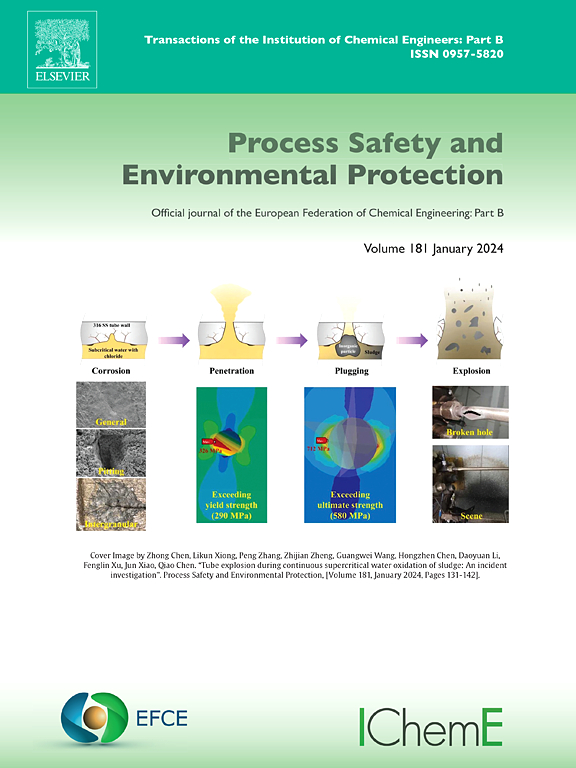Enhanced ozone decomposition in humid conditions by bismuth-doped OMS-2
IF 6.9
2区 环境科学与生态学
Q1 ENGINEERING, CHEMICAL
引用次数: 0
Abstract
Octahedral molecular sieve manganese oxide (OMS-2) has attracted much attention due to its excellent catalytic properties in ozone decomposition studies. However, it is limited in practical application by low moisture resistance. This study investigates enhancing OMS-2's humidity tolerance and ozone decomposition capability through bismuth (Bi) doping. Multiple characterization techniques confirm successful Bi incorporation and a significant increase in the specific surface area. Performance testing demonstrates that 10% Bi-OMS-2 achieves 100% ozone conversion and maintains ~ 90% efficiency for 120铋掺杂OMS-2在潮湿条件下增强臭氧分解
八面体分子筛氧化锰(OMS-2)由于其优异的催化性能在臭氧分解研究中备受关注。然而,它的抗湿性低,在实际应用中受到限制。本研究通过添加铋(Bi)来提高OMS-2的耐湿性和臭氧分解能力。多种表征技术证实了Bi的成功掺入和比表面积的显著增加。性能测试表明,在60%的相对湿度下,10%的Bi-OMS-2可以达到100%的臭氧转化率,并在120min内保持~ 90%的效率。在催化剂体系中,Mn3 +和Mn4 +之间的氧缺陷位点及其电子转移对O3分解过程起着关键的控制作用。10% Bi- oms -2材料对臭氧分解的催化活性和耐水性的增强可归因于加入Bi后形成的丰富的氧空位和增加的水接触角。本研究结果为构建具有良好耐湿性的高性能消臭氧溶液提供了坚实的理论基础。
本文章由计算机程序翻译,如有差异,请以英文原文为准。
求助全文
约1分钟内获得全文
求助全文
来源期刊

Process Safety and Environmental Protection
环境科学-工程:化工
CiteScore
11.40
自引率
15.40%
发文量
929
审稿时长
8.0 months
期刊介绍:
The Process Safety and Environmental Protection (PSEP) journal is a leading international publication that focuses on the publication of high-quality, original research papers in the field of engineering, specifically those related to the safety of industrial processes and environmental protection. The journal encourages submissions that present new developments in safety and environmental aspects, particularly those that show how research findings can be applied in process engineering design and practice.
PSEP is particularly interested in research that brings fresh perspectives to established engineering principles, identifies unsolved problems, or suggests directions for future research. The journal also values contributions that push the boundaries of traditional engineering and welcomes multidisciplinary papers.
PSEP's articles are abstracted and indexed by a range of databases and services, which helps to ensure that the journal's research is accessible and recognized in the academic and professional communities. These databases include ANTE, Chemical Abstracts, Chemical Hazards in Industry, Current Contents, Elsevier Engineering Information database, Pascal Francis, Web of Science, Scopus, Engineering Information Database EnCompass LIT (Elsevier), and INSPEC. This wide coverage facilitates the dissemination of the journal's content to a global audience interested in process safety and environmental engineering.
 求助内容:
求助内容: 应助结果提醒方式:
应助结果提醒方式:


